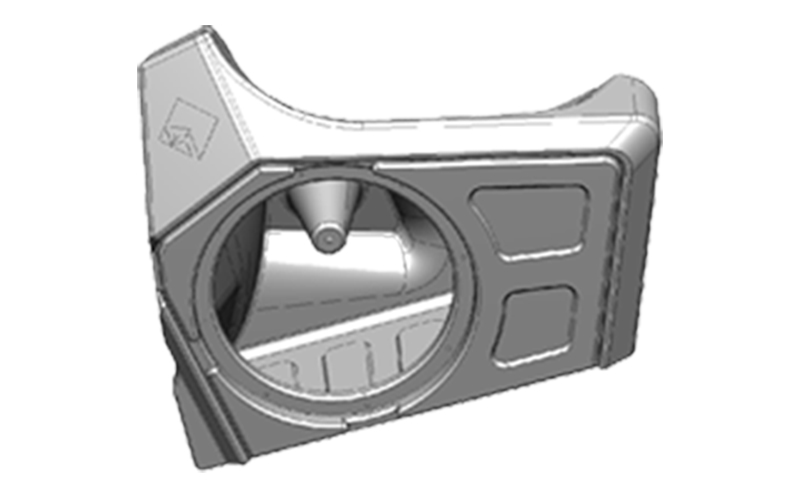How to Design the Holes for Rotomolded Products
 Mar 15,2024
Mar 15,2024

How to Design the Holes for Rotomolded Products
Holes, or vents in rotomolded products can serve various purposes, such as allowing for ventilation, drainage, access points for cables or hoses, or simply as decorative features. Holes or vents can be designed as either outward-projecting through-holes, blind holes, or as inward-recessed through-holes or blind holes. Generally speaking, holes of any shape and size can be molded-in, while round holes is frequently used.

Inward-recessed blind holes are the easiest to produce, which can be formed by inserting an insert into the mold that has the same depth and diameter as the hole itself. Of course, this insert must have good thermal conductivity, at least not lower than that of the mold, to ensure that its temperature is sufficient for the molten material to coat it well, thus satisfying the hole's diameter and depth. However, it is important to note that the depth of the blind hole should not be too great, as it can be difficult for heat to reach the bottom of a very deep blind hole, which can affect the formation in that area. For inward-recessed through-holes, an insert must also be inserted into the mold, and this insert must also have good thermal conductivity to ensure that the molten material can coat it well. The only difference is that this insert must be longer, preventing the through-hole in the mold from being covered by the flowing material. If possible, it is best to design the inward-recessed through-hole to coincide with a vent hole that the mold needs to set up, achieving two benefits at once. Another method is to first form an inward-recessed blind hole as previously described, and then bore through it to create an inward-recessed through-hole.
Outward-projecting holes, on the other hand, are actually formed by creating a boss on the rotomolded product, which requires designing the corresponding part of the mold accordingly. Due to the close parallel walls that form the boss, if the space in the middle is too small, it can cause bridging between the powder materials during molding. Therefore, the space for the boss must be sufficiently large, which means that the mold diameter at this location should be at least five times the average wall thickness, to ensure that the material can melt and flow within the outward-projecting cavity, thus forming an outward-projecting blind hole. For through-holes, simply removing the material at the outer end of the boss will suffice.
When designing rotomolded products, it is important to note that holes or vents should be placed where they will not weaken the strength of the product. Sufficient distance should be left between holes and vents, as well as between holes and the edges, and this distance should generally not be less than the diameter of the hole or vents.
Interested in learning more about rotational molding design? Please feel free to contact us.
 Tel: 0086-13632687993
Tel: 0086-13632687993  Email: roto@lightvenus.com
Email: roto@lightvenus.com

 Home
Home What are the Key Factors Affecting the Lifespan of Rotomolded Products
What are the Key Factors Affecting the Lifespan of Rotomolded Products  You May Also Like
You May Also Like



 Tel
Tel
 Email
Email
 Address
Address








